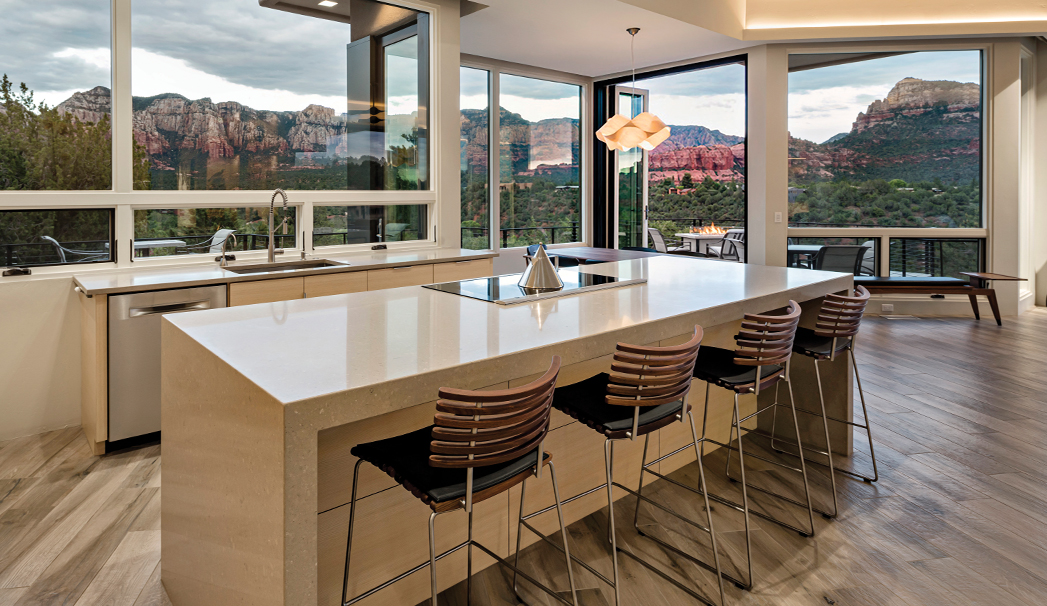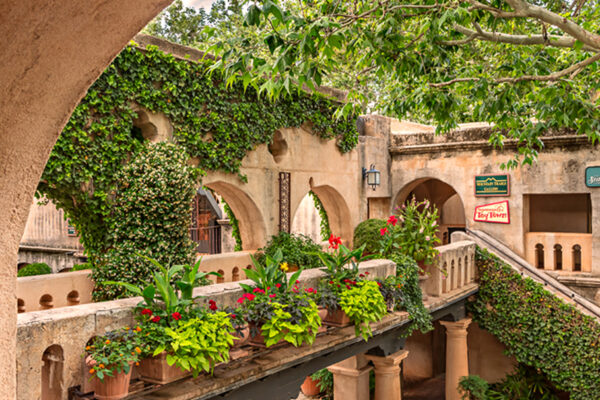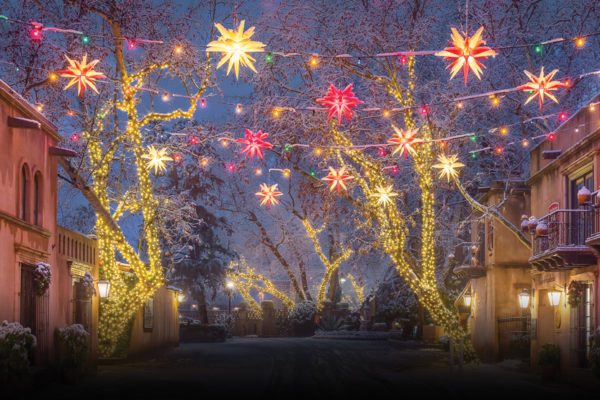A STUNNING RENOVATION OF A WEST SEDONA HOME
Residential building and interior designer Paolo Scardina believes that sustainable design and beauty are intertwined. “We don’t often think of sustainability as beauty and inspiration, but to me, it is. If you can sustain the quality of your life, and enjoy the house that you’re living in, that’s a form of sustainability. And the house can be designed so it gives you that,” says Paolo, of full-service residential design company Sustainable Sedona. He started his own practice in 1990 prior to serving as director of interior design for eight years with a San Francisco, California, company. He
moved to Sedona about eight years ago from Portland, Oregon.
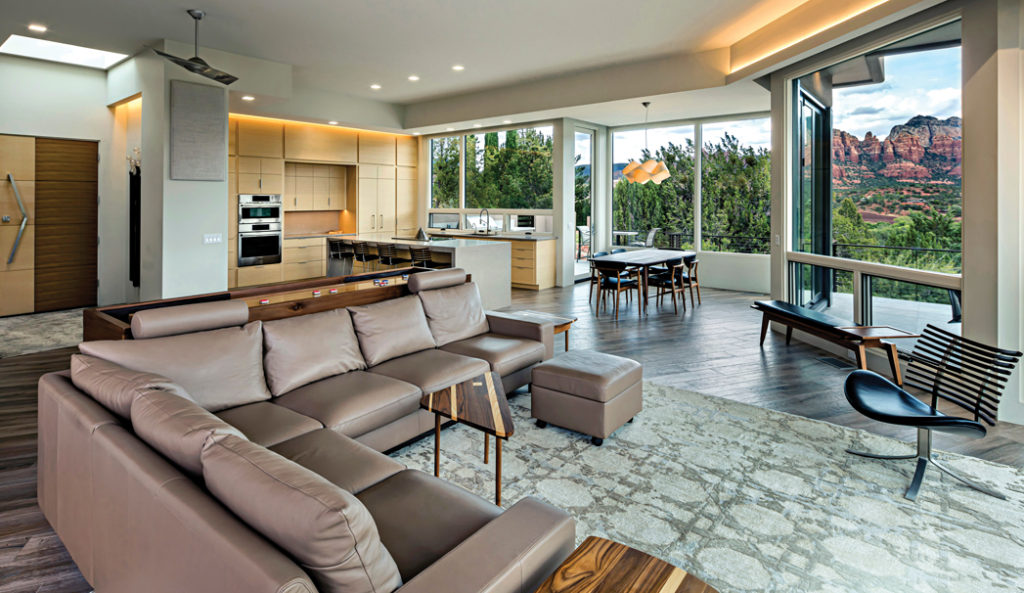
One of the renovation’s main goals? To showcase Sedona’s stunning red rock views all around.
One outstanding example of stylish sustainable design? A home Paolo designed in West Sedona that is pictured in the pages of this magazine. His clients – a California couple who had relocated to Sedona – and fell in love with a property located on a stunning spot in the Palisades neighborhood.
The only issue? The home was outdated. So Paolo and his team gutted the entire existing structure down to the studs. One of the main design objectives was capturing Sedona’s magnificent vistas.
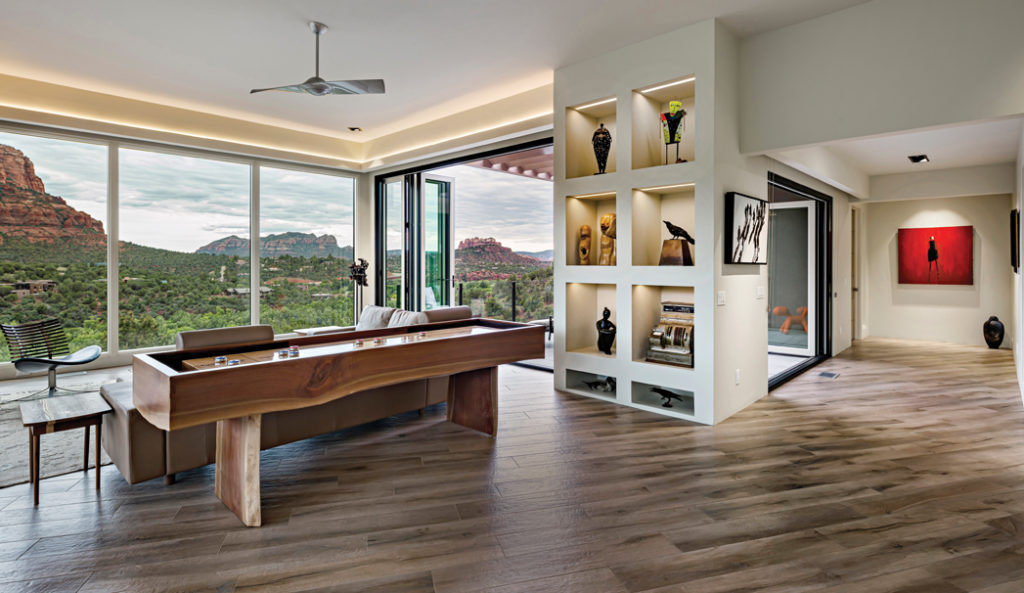
The owners of the home also have a large art collection that was highlighted in the renovation with gallery walls and niches.
“The big thing was that there were amazing, amazing views. But the original design had small windows in the walls. And one of the first things that my client said to me was, ‘We’ve got to rip these walls out. We have to put big giant windows in so we can see these beautiful Sedona views.’ So that became kind of heart and soul of that design was to capture those views,” says Paolo. “We ended up putting in a really high performance window package that would allow us to capture those views and still maintain the integrity of the envelope of the home.” But the windows – every single one was double glazed with insulating argon gas cavities – designed to reduce heat gain and loss in both hot and cold seasons – were just the start. The list of how a home can be made sustainable is long. A few highlights from this particular home included all new LED lighting for low energy consumption. All of the kitchen appliances meet Energy Star standards. Porcelain ceramic tile was used for flooring, shower walls and backsplashes because of its durability and versatile beauty. Landscaping can be a key part of sustainability too. The existing vegetation was retained, and the new vegetation is drought-resistant and native to the desert.
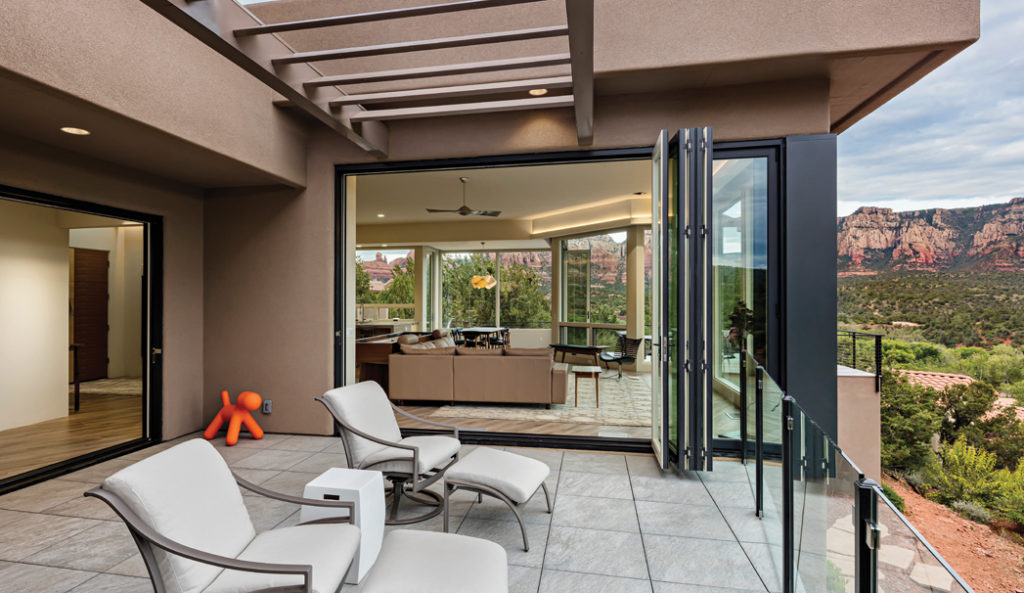
The old stucco was removed from the outside of the home and replaced with a new three-coat system that included one-inch rigid foam insulation with a final coat of integral color stucco.
The old insulation was replaced with high-performance blown-in cellulose insulation and sealed with expanding foam around all windows, doors, gaps and holes to make a “complete air barrier system” or essentially wrapping the home to protect it from the effects of airflow. Meaning that cooled or heated air is less likely to leak out – helping contribute to lower utility bills. An air barrier system also helps keep pollutants, like dust and allergens, out of the home and boosts air quality.
Paolo sees sustainable design as being important for two key reasons. “We want to respect our planet. We don’t want to abuse it in any way. And when you build a house, you’re affecting the planet. You’re using materials. So that’s one vantage point from the planet. And then the other is from the people who live inside the house. You want to sustain the quality of their life. You want to make it so that they can enjoy it,” says Paolo. “We shouldn’t forget that beauty and inspiration is also a big part of what makes a dwelling sustainable.”
To learn more about Paolo and his company, visit sustainablesedona.com.
NORTH AMERICA’S FIRST LANDSCAPE HOTEL AMBIENTE BREAKS GROUND
Another ambitious project with a focus on sustainable design is Ambiente. Slated to open in December of 2020, Ambiente touts itself as the first landscape hotel in North America. A landscape hotel, essentially, is a property constructed using sustainable design methods and showcases a deep respect for the environment using modern architecture that complements its natural surroundings. The property will feature 40-cubed shaped “atriums” or rooms that appear to be “floating” above the Earth. The structures are made out of bronzed glass and steel piers and mirror the environment. The rooms will be built on stilts – intended to minimally disrupt the natural surroundings. “It has been our longtime dream to create a truly exciting and unique experience that is in harmony with the rare beauty of Sedona, our hometown where our family has done business for close to 35 years,” said Jennifer May, co-founder of luxury hotel development and management company Two Sister Bosses, which she operates with her sister Colleen Tebrake, in a press release.
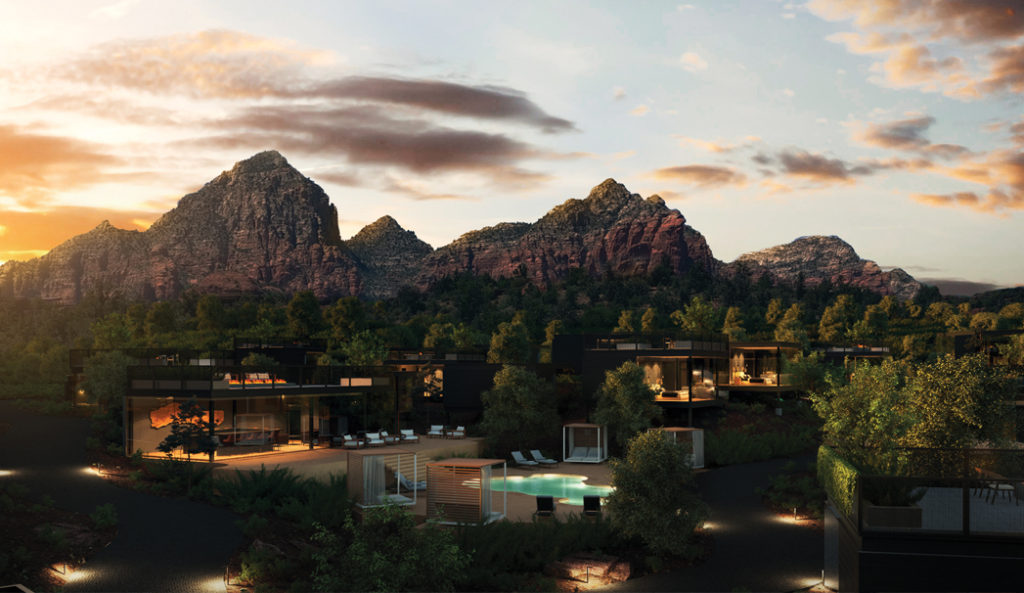
Ambiente touts itself as the first landscape hotel in North America. Landscape hotels are built with a deep respect for the environment, focusing on sustainable methods and organic, modern architecture that complements the surroundings.
If the name Two Sister Bosses sounds familiar, it’s because Jennifer’s father Mike Stevenson – a Sedona native, developer and businessman who consults with Two Sister Bosses – owns the property and developed Mariposa Latin Inspired Grill. A friend of the May family owned the property that’s almost next door to Mariposa and approached Mike with the idea of building a hotel in that same spot. Originally, the plan was to put up a traditional two-and-a-half story lodge hotel. But as Jennifer and her father walked around the property, they were instantly captivated by the natural beauty of the land: the hills, valleys and ancient washes. And that plan for a traditional hotel was scrapped in favor of a project honoring the gorgeous grounds. After doing some research online, she stumbled upon a landscape hotel in Spain.
“How can we preserve the property almost in its completely native state, if possible, and still put a hotel and do something cool and different?” says Jennifer. “It’s not the most cost effective way to build it, but at the same time, it’s the most effective way to keep the land as pristine as possible, but offer the guests something completely different.” Ambiente is designed with the intention of making visitors feel like they’re immersed in nature. “The name ‘Ambiente’ means environment and atmosphere. We’re selling an experience of what Sedona actually is,” says Jennifer. “Come and enjoy being in their room, and enjoy being in their room and looking at the monsoon blow through or watching the snowfall and having their windows open and being able to feel like you’re right there in it.”
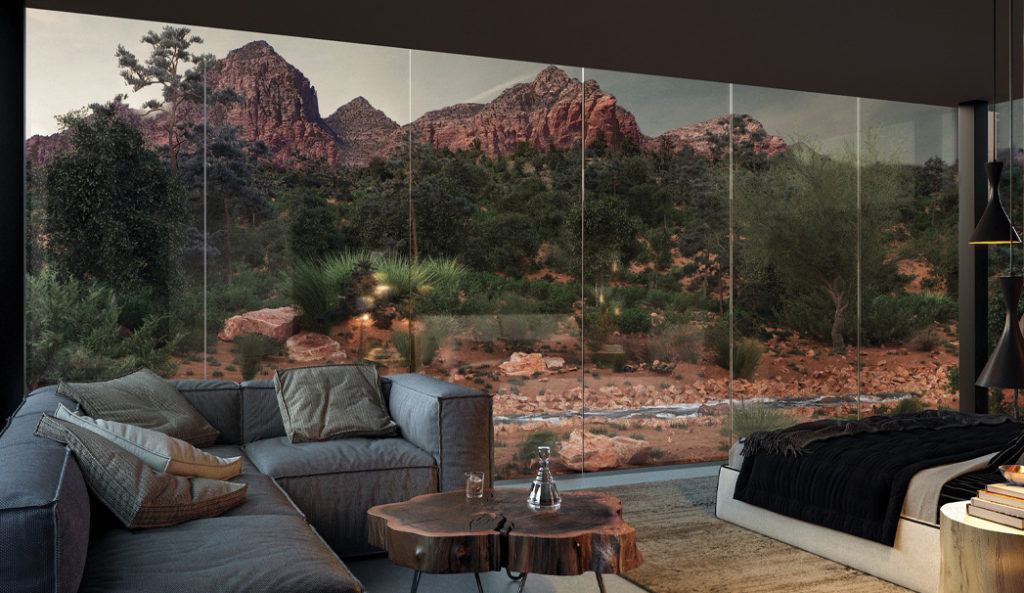
Guest rooms will feature floor-to-ceiling glass walls. Developer Two Sister Bosses selected a type of dark-bronze glass because for two reasons: it allows clear visibility from the inside. But it’s also highly reflective – giving guests privacy and reflecting mirrored silhouettes of the grounds.
The hotel is also nearby the Adobe Jack trailhead – making it a perfect place for guests to hike and mountain bike. Guests are slated to have access to a drink-filler station near the trailhead. They will be encouraged to not use their cars from the moment they set foot on property until they leave. A shuttle bus may transport guests to popular restaurants and trails. They may have access to
battery- and pedal-powered e-bikes and micro-vehicles. Rooftop patios are designed to encourage guests to appreciate Sedona’s Dark Sky status. Day beds and a seating area complete with a fire pit encourage guests to stay a while. Plants will naturally provide privacy between atriums.
One sustainable highlight? San Diego-based landscape architect John Krizan of Krizan Associates – the same team who worked on Mariposa – has plans to use existing ancient waterways to create an environment that mimics a natural creek.
And the sustainability goes beyond the landscaping. Rooms are slated to be “smart” rooms, meaning the lights will turn off when guests leave the room and will be set to an away temperature. The atriums will feature low-e glass or low-emissivity glass that decreases the amount of UV light streaming through the windows while blocking out the amount of sunlight – keeping temperatures cooler without decreasing the brightness. The interiors will be insulated as much as possible to keep the spaces heated.
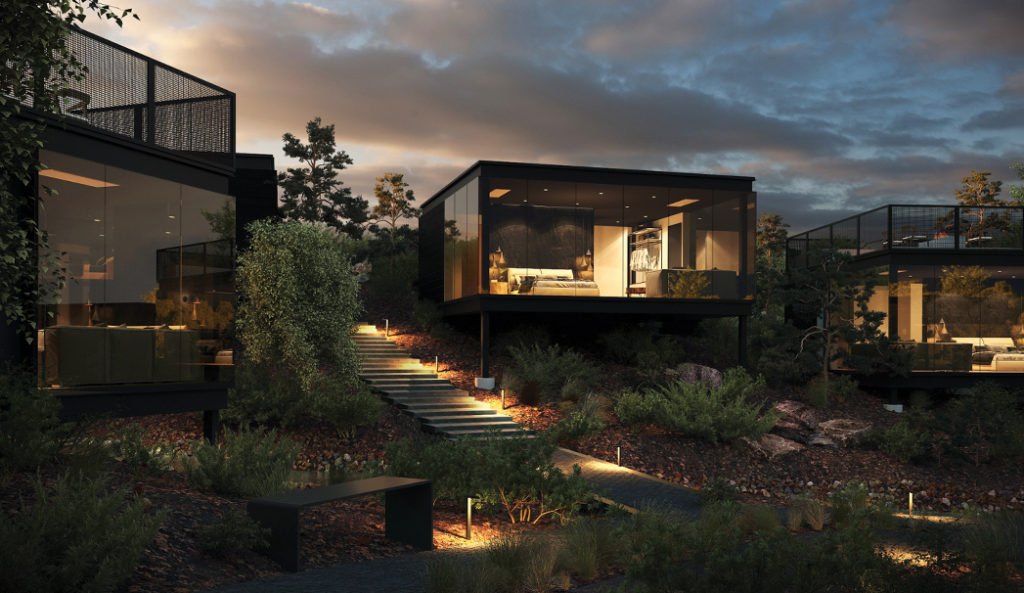
Ambiente will feature 40 cube-shaped, luxury guest “atriums” or rooms elevated above the ground by steel piers and encased in bronze glass to give the appearance that the structures are floating.
Jennifer also has plans to implement wood key cards, in-room spa treatments sourced with local ingredients when possible, poolside snacks made with local, native ingredients and sourcing linens and pillows that don’t use chemicals during production, if possible. Above all, the team wants to pay respect to the city and its stunning environment they’ve called home for decades. The project has received a letter of approval from West Sedona Casa Contenta’s Homeowner’s Association. The Sedona Chamber of Commerce also has pledged its support. “We want it to be beautiful and stay beautiful. This hotel is not being built to turn around and sell it and just make money on it. We’re actually going to keep it as a family business,” says Jennifer. Beyond that, the hope is that the hotel inspires guests to have a deeper appreciation for Sedona. “By doing what we’re doing, we’re encouraging a group of people who come stay with us to be sensitive to the environment. That’s the main goal: to share Sedona in a sensitive way,” says Mike.
For more information, visit ambientesedona.com.

